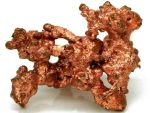EXPLORER and developer African Pioneer has started a 25 to 30 hole shallow diamond drilling programme on the Ongombo project in Namibia, with six holes thus far intersecting “encouraging” sulphide mineralisation with chalcopyrite at shallow depths.
With projects also in Botswana and Zambia, African Pioneer notes that the drill programme is intended to test near-surface oxide and sulphide copper/gold mineralisation, with visual estimates of chalcopyrite content in the mineralised zones indicating notable quantities of copper sulphide, to date.
Work is also under way to resample historic drill core to test for elevated gold values in and around copper mineralisation.
Chairperson Colin Bird says the programme is intended to identify the feasibility for a small openpit operation, thereafter progressing to underground mining.
Assessment of the potential of the mineralised zone at this stage in the evaluation process is based on visual estimates of copper sulphide content, occurring as chalcopyrite and relies on the experience of the geologist managing the drilling programme and logging core to assess the proportion of visible chalcopyrite relative to pyrite and other minerals making up the mineralised horizon.
However, African Pioneer explains that visual estimates of copper content do not reflect the expected assay grade of the mineralised horizon but do indicate the extent of chalcopyrite mineralisation.
The gossanous outcrop at Ongombo has been assumed to be the surface expression of the mineralisation drilled at depth to generate the current Ongombo mineral resource estimate.
African Pioneer has projected this same mineralisation to extend to surface through to the gossan outcrop, assuming that previous exploration drilling ignored the near-surface potential on the basis that copper oxide mineralisation, at the time that Gold Fields Namibia was exploring the area, was not conducive to good metal recovery.
However, currently, flotation processing has the capacity to recover economic quantities of oxide and sulphide copper in parallel in the same flotation processing plant making any shallow mineralisation a valid target for development, states African Pioneer.
As such, the company will test the shallow mineralisation potential over a strike length of about 1 km and down dip of the gossan outcrop to the point where historic drilling occurs.
In terms of assessing the gold grades of historic drill core, African Pioneer notes that cores of about 80 drill holes were found, having been undertaken by previous explorers, including Gold Fields Namibia.
Going forward, African Pioneer plans to resample the drill core in and around the mineralised horizon in each case, to assess the distribution of gold attributable to the existing mineral resource estimate.
Historically limited gold assaying was undertaken, resulting in only low-grade gold values being reported as a result of any grade less than 1 g/t of gold being considered insignificant. This is particularly in cases whereby exploration was undertaken by South African companies that were more accustomed to significantly higher gold grades in their deep level gold mines.
At the current gold price, and in conjunction with known copper grades, African Pioneer reports that there is scope for an important by-product addition of gold in the mineral resource.










